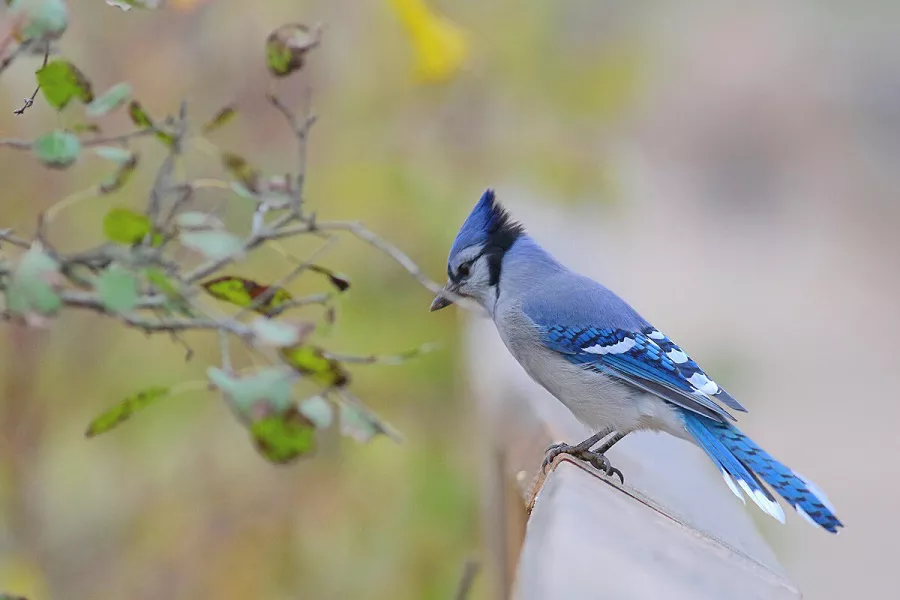The blue jay (Cyanocitta cristata) is a stunningly beautiful bird known for its vibrant blue plumage and distinctive crest. Native to North America, these intelligent and resourceful birds belong to the Corvidae family, which includes ravens, crows, and magpies. The lifespan of a blue jay is a topic of great interest, as understanding their longevity can provide valuable insights into their ecological significance and conservation efforts. In this article, we delve into the factors influencing the life expectancy of blue jays and explore how these fascinating creatures navigate the challenges of survival.
1. Natural Habitat and Geographic Distribution
Blue jays are found in a diverse range of habitats, from dense forests and woodlands to urban parks and gardens. Their geographic distribution extends from Canada to the southern United States, and they are particularly abundant in the eastern and central regions of North America. The variety of environments they inhabit can significantly impact their longevity, as factors such as food availability, climate, and predation risk can differ widely across their range.
2. Life Expectancy in the Wild
The average lifespan of a wild blue jay typically ranges from 7 to 12 years. However, this estimate can be influenced by various factors, including food availability, predation, and disease prevalence. Blue jays face multiple threats in the wild, such as predation from raptors, domestic cats, and other predators. Additionally, harsh weather conditions and habitat loss due to human activities can pose challenges to their survival.
3. Life Expectancy in Captivity
In captivity, blue jays may live longer than their wild counterparts due to the absence of natural threats and access to a consistent food source. Under proper care and conditions, some captive blue jays have been known to live up to 20 years or more. However, caring for blue jays in captivity requires expertise, as these birds have specialized dietary and environmental needs that must be met to ensure their well-being and longevity.
4. Factors Influencing Blue Jay Longevity:
Several factors influence the lifespan of blue jays, including genetics, predation, habitat quality, and disease prevalence.
a. Genetic Factors:
Genetics play a significant role in determining the lifespan of blue jays. It has been observed that some individuals may have genetic predispositions that make them more resilient to diseases or environmental stressors, thus contributing to a longer lifespan.
b. Predation:
Predation is a major factor affecting blue jay mortality. Natural predators such as hawks, owls, and raccoons pose a constant threat to blue jays. The ability of blue jays to evade predators through their agile flight and early detection systems can significantly impact their chances of survival.
c. Habitat Quality:
The availability of suitable habitats and resources greatly influences blue jays’ longevity. Healthy forests with diverse tree species provide ample food sources, nesting sites, and cover from predators. Urbanization, deforestation, and habitat fragmentation can negatively impact blue jays by reducing their access to these essential resources.
d. Disease Prevalence:
Diseases, both viral and bacterial, can impact the lifespan of blue jays. Avian pox, West Nile virus, and various parasitic infections have been reported in blue jays. Infection rates and the ability of individuals to combat or resist diseases vary, resulting in varying lifespans among blue jays.
5. Blue jays Diet
Blue jays are omnivorous, feeding on a wide variety of food items, including nuts, seeds, insects, small vertebrates, and fruits. Their adaptability to different food sources contributes to their survival in diverse environments. However, their diet can also impact their health and longevity. An imbalanced diet or exposure to pesticides and pollutants in the environment can lead to health issues, affecting their ability to survive and thrive.
6. Behavioral Adaptations
Blue jays exhibit complex social behaviors, including cooperative breeding, caching food, and forming tight-knit family groups. These behaviors enhance their chances of survival and contribute to their ability to adapt to changing environmental conditions. By working together, blue jays can protect their young from predators, locate hidden food caches, and share knowledge about food sources.
7. Migratory Patterns and Survival Challenges
Migration is another significant aspect influencing the life expectancy of blue jays. Some blue jay populations are migratory, while others are non-migratory, with their behavior depending on their geographic location. Migrating blue jays face various hazards, including collisions with buildings and predators they encounter along their migration routes. Successfully navigating these challenges is crucial for their survival and ability to return to their breeding grounds.
Conclusion
The lifespan of blue jays is a complex interplay of various factors, from their natural habitat and feeding habits to their behavioral adaptations and migratory patterns. While the average lifespan of wild blue jays is relatively modest, their adaptability and intelligence contribute to their ability to cope with environmental challenges. Understanding the factors influencing their longevity is vital for conservation efforts and ensuring the continued presence of these captivating avian species in North America’s diverse ecosystems.


 Facebook
Facebook  Instagram
Instagram  Youtube
Youtube 